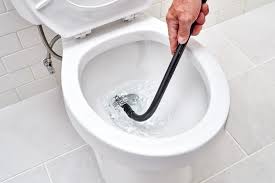Diaphragm Pumps Explained: Key Benefits for Modern Flow Control Systems

In the world of modern industrial operations, precise and reliable fluid handling is essential. From chemical processing to water treatment and food manufacturing, industries require pumps that offer durability, flexibility, and efficient performance. One type of pump that has increasingly gained popularity across diverse sectors is the diaphragm pump. Its unique design and operational advantages make it a standout choice for modern flow control systems.
What is a Diaphragm Pump?
A diaphragm pump is a type of positive displacement pump that utilizes a flexible diaphragm to move fluids. Unlike traditional centrifugal pumps, which rely on rotational energy to transfer liquids, diaphragm pumps operate through the reciprocating motion of the diaphragm, creating a variable volume chamber. This movement draws fluid into the pump on the suction stroke and expels it on the discharge stroke.
Diaphragm pumps can be mechanically or pneumatically driven. Pneumatic diaphragm pumps use compressed air to drive the diaphragm, while mechanically driven pumps employ a crankshaft or motor to create the reciprocating motion. This versatility in operation makes diaphragm pumps adaptable to a wide range of industrial applications.
Key Features of Diaphragm Pumps
Several features set diaphragm pumps apart from other pumping technologies:
- Sealless Design: One of the most important advantages of diaphragm pumps is their sealless configuration. This design prevents leaks and minimizes the risk of contamination, making them ideal for handling hazardous or corrosive fluids.
- Self-Priming Capability: Diaphragm pumps are inherently self-priming, meaning they can start pumping without the need for external priming. This is especially valuable in applications where the pump must handle suction lift or operate in intermittent conditions.
- Dry-Running Tolerance: Unlike some pumps that can be damaged when run dry, diaphragm pumps can handle dry-running for short periods without immediate failure. This characteristic reduces the risk of downtime and maintenance costs.
- Wide Chemical Compatibility: The materials used for diaphragms and pump components can be selected to withstand aggressive chemicals, abrasive fluids, or slurries, enhancing their versatility in chemical processing and industrial applications.
- Pulsation Control Options: Many modern diaphragm pumps include features or accessories to minimize pulsation, ensuring a smooth flow even in sensitive processes.
Applications of Diaphragm Pumps
Diaphragm pumps are incredibly versatile and serve a broad spectrum of industries:
- Chemical Industry: Diaphragm pumps are ideal for handling corrosive, viscous, or abrasive chemicals. Their sealless design ensures that hazardous substances are contained safely, protecting both the environment and personnel.
- Water and Wastewater Treatment: Diaphragm pumps are commonly used for dosing chemicals, pumping sludges, or transferring water in treatment plants. Their ability to handle solids and maintain consistent flow makes them invaluable in these applications.
- Food and Beverage: In food processing, hygiene is critical. Diaphragm pumps constructed with FDA-compliant materials can safely transfer edible liquids, sauces, and syrups without contaminating the product.
- Pharmaceutical and Biotechnology: Precise dosing and contamination prevention are paramount in pharmaceutical production. Diaphragm pumps offer accurate flow control while maintaining sterile conditions.
- Mining and Construction: Diaphragm pumps excel in moving abrasive slurries and solids-laden fluids, which makes them suitable for mining operations, construction sites, and slurry transfer applications.
Advantages of Diaphragm Pumps in Modern Flow Control Systems
Modern flow control systems demand reliability, efficiency, and adaptability. Diaphragm pumps deliver on these requirements in several ways:
1. Exceptional Reliability
The robust design of diaphragm pumps ensures long-term operation even in challenging conditions. Since there are no mechanical seals to wear out, the risk of leaks or sudden failures is reduced. This reliability translates into lower maintenance costs and uninterrupted operation, which is critical for industries where downtime can be costly.
2. Flexibility in Installation
Diaphragm pumps can be installed in virtually any orientation, including vertical or horizontal positions. Their ability to handle suction lift eliminates the need for flooded suction, allowing for more flexible system layouts. This adaptability is particularly useful in retrofitting existing systems or designing compact pumping stations.
3. Accurate Flow Control
Certain applications, such as chemical dosing or pharmaceutical production, require precise control over flow rates. Diaphragm pumps can be equipped with variable stroke lengths, adjustable pulsation dampeners, or electronic controllers to achieve consistent and accurate fluid transfer. This level of control ensures product quality and process stability.
4. Handling of Challenging Fluids
Many industrial fluids are corrosive, abrasive, or contain solids. Traditional pumps often struggle with these fluids, leading to wear, frequent maintenance, or complete failure. Diaphragm pumps, however, are specifically engineered to handle such challenging substances. Their diaphragms can be made from materials like PTFE, Santoprene, or rubber, providing chemical resistance and durability.
5. Safety and Environmental Protection
By preventing leaks and spills, diaphragm pumps enhance workplace safety and reduce environmental impact. This makes them particularly suitable for industries handling hazardous chemicals, toxic fluids, or strong acids and bases. Additionally, their ability to run dry for short periods further protects equipment and minimizes environmental hazards.
6. Energy Efficiency
While pneumatic diaphragm pumps require compressed air, advances in design have significantly improved their energy efficiency. Properly selected diaphragm pumps can deliver high flow rates and pressures without excessive energy consumption, making them an economical choice for many industrial operations.
Choosing the Right Diaphragm Pump
Selecting the appropriate diaphragm pump depends on several factors:
- Fluid Characteristics: Consider the viscosity, chemical composition, temperature, and presence of solids in the fluid to determine the suitable diaphragm material and pump type.
- Flow Rate and Pressure Requirements: Determine the maximum flow rate and discharge pressure needed for your system to ensure optimal performance.
- Operating Environment: Assess whether the pump will be exposed to corrosive atmospheres, extreme temperatures, or harsh environmental conditions.
- Control Needs: For applications requiring precise dosing, consider pumps with adjustable flow control or electronic monitoring capabilities.
- Maintenance Considerations: Evaluate the ease of maintenance, availability of replacement parts, and service support, especially for critical industrial operations.
Innovations in Diaphragm Pump Technology
Modern diaphragm pumps continue to evolve, incorporating new materials, designs, and technologies to meet increasingly complex industrial demands. Some notable innovations include:
- Smart Monitoring: Advanced pumps now offer sensors and connectivity options that enable real-time monitoring of flow rates, pressures, and operational status. This digital integration allows predictive maintenance and reduces unplanned downtime.
- Enhanced Energy Efficiency: Newer designs minimize air consumption in pneumatic pumps and reduce energy losses in mechanical pumps, optimizing operational costs.
- Improved Materials: Ongoing development of chemically resistant and wear-resistant diaphragm materials extends pump life and enables handling of more aggressive fluids.
- Low-Pulsation Designs: Innovations in pulsation dampening and fluid path design have made diaphragm pumps smoother and more suitable for applications sensitive to flow fluctuations.
Conclusion
Diaphragm pumps have established themselves as indispensable components in modern flow control systems. Their unique design, reliability, and adaptability make them suitable for a wide range of industrial applications, from chemical processing to food production and water treatment. By offering precise flow control, the ability to handle challenging fluids, and enhanced safety, diaphragm pumps help industries achieve efficiency, reliability, and compliance with regulatory standards.
For companies looking to optimize their fluid handling processes, investing in a high-quality diaphragm pump is a strategic decision that pays off in operational stability, reduced maintenance, and improved safety. Whether you are managing corrosive chemicals, abrasive slurries, or delicate pharmaceuticals, diaphragm pumps provide the performance and flexibility required by today’s demanding industrial environment.
For those seeking expertise in selecting and implementing these pumps, working with a trusted supplier ensures that the system is tailored to the specific needs of your application, maximizing both performance and longevity.



